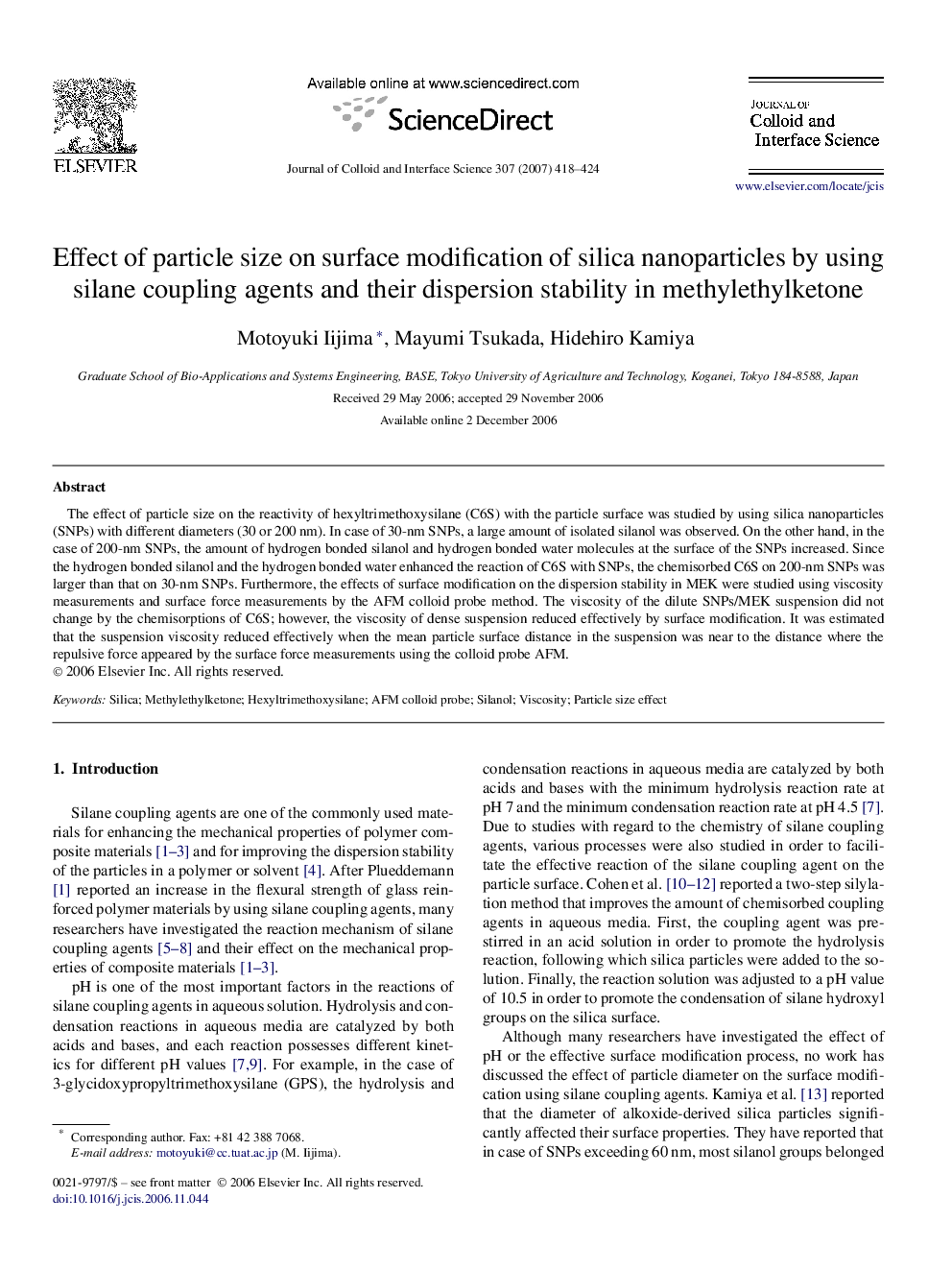| Article ID | Journal | Published Year | Pages | File Type |
|---|---|---|---|---|
| 612655 | Journal of Colloid and Interface Science | 2007 | 7 Pages |
The effect of particle size on the reactivity of hexyltrimethoxysilane (C6S) with the particle surface was studied by using silica nanoparticles (SNPs) with different diameters (30 or 200 nm). In case of 30-nm SNPs, a large amount of isolated silanol was observed. On the other hand, in the case of 200-nm SNPs, the amount of hydrogen bonded silanol and hydrogen bonded water molecules at the surface of the SNPs increased. Since the hydrogen bonded silanol and the hydrogen bonded water enhanced the reaction of C6S with SNPs, the chemisorbed C6S on 200-nm SNPs was larger than that on 30-nm SNPs. Furthermore, the effects of surface modification on the dispersion stability in MEK were studied using viscosity measurements and surface force measurements by the AFM colloid probe method. The viscosity of the dilute SNPs/MEK suspension did not change by the chemisorptions of C6S; however, the viscosity of dense suspension reduced effectively by surface modification. It was estimated that the suspension viscosity reduced effectively when the mean particle surface distance in the suspension was near to the distance where the repulsive force appeared by the surface force measurements using the colloid probe AFM.
Graphical abstractSilica particle size had an effect on the reactivity of hexyltrimethoxysilane with silica particle surface.Figure optionsDownload full-size imageDownload as PowerPoint slide
